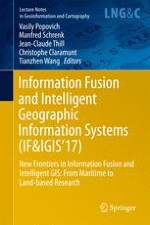This book presents the proceedings of the 8th international Symposium “Information Fusion and Intelligent Geographic Information Systems 2017” (IF&ICIS'2017), which took place at Shanghai Maritime University, China, from May 10 to 12, 2017. The goal of the symposium was to bring together leading global experts in the field of spatial information integration and intelligent GIS (IGIS) to exchange cutting-edge research ideas and experiences, to discuss perspectives on the fast-paced development of geospatial information theory, methods and models in order to demonstrate the latest advances in IGIS and discover new ways of collaboration. The topics focus on IGIS fundamentals, models, technologies and services in maritime research, such as underwater acoustics, radiolocation, navigation, marine energy, logistics, environmental management, seafood, safety of maritime navigation and others. In addition the book discusses the integration of IGIS technologies in the emerging field of digital humanities research.
